They may have saved your life or helped shape the world you live in, yet they are not household names.
Each day, every one of us benefit from the advances of science: a life-saving medicine; a time-saving contraption; a money-making discovery.
But while many people can name the creators of South Park, do you know the researcher behind Tamiflu? Thousands of fans flocked to see talk-show queen Ellen DeGeneres in Sydney in March but if you bumped into the scientific superstar who uncovered how bacteria develops multiple resistance to antibiotics, would you recognise him or her?
Australia has cultivated many of the world's scientific elite, who, as individuals or within a group, have discovered, studied or invented something that has likely improved your life or the life of someone you know.
Their offices and laboratories are decorated with the scientific establishment's most prestigious awards and accolades. And yet, most remain unknown outside academic and scientific circles.
Here's an introduction to a few of this country's real celebrities. (They're happy to sign autographs).
David Vittorio
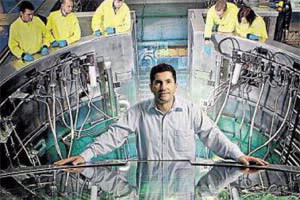 |
| David Vittorio and the extended team at ANSTO's nuclear medicine work has helped revolutionise diagnostic tools. |
If you've ever had your heart, lung, brain or bone scanned in Australia, there's a good chance David Vittorio and the extended team of scientists and engineers at the Australian Nuclear Science and Technology Organisation (ANSTO) made it possible.
As the manager of the country's only research nuclear reactor, in Sydney, which produces most of the nation's nuclearmedicine, Vittorio must ensure 10,000 doses arrive at hospitals in Australia and the world each week. One of the main products of the reactor, Molybdenum-99, is converted to Technetium- 99 and sent to 220 hospitals, where it is used by doctors to diagnose heart disease and cancers.
It is also used in bone oncology, neurology and to treat kidney and gastrointestinal tract disorders. Each year, more than half a million Australians receive a diagnosis through the use of Molybdenum-99.
As well as overseeing the medicine loaded into and out of ANSTO 's low enriched uranium reactor, OPAL, Vittorio manages the machinery's maintenance.
Hundreds of national and international scientists and PhD students use the reactor annually to conduct their research.
Vittorio says his job's greatest reward is knowing his team has contributed to improving the quality of life of so many in the community.
"To be Australia's only nuclear reactor manager is a great privilege," says Vittorio, who studied applied science, followed by an MBA.
Peter Colman
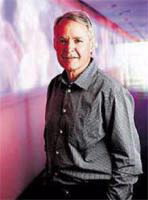 |
| Bugbear ... Peter Colman developed antiviral drugs |
It's almost that time of year again. Flu season.
One day you're fine, the next, you've got a throbbing head, aching muscles and you're finding it impossible to get out of bed.
Many of you will book in for a flu jab, an attempt to beat the virus at its own game. But statistics suggest a few thousand people in NSW will fall victim to the flu this winter. (Many thousands more will catch common bacterial colds and think they've got the flu).
For those who do contract the flu, a doctor may prescribe a class of drug invented by Melbourne virologist Peter Colman. While most Australians know it was Adelaide pathologist Howard Florey who discovered penicillin was a wonder-drug against bacterial infections, far fewer recognise Colman, a senior scientist at the Walter and Eliza Hall Institute, as the man whose research on the constantly changing influenza virus resulted in the antiviral drug Relenza, and enabled others to develop Tamiflu.
While working at the CSIRO in the 1980s, Colman, with his Australian National University colleague Graeme Laver, wanted to understand how the influenza virus changed so rapidly, the key characteristic that enabled the virus to reinfect the population year after year.
They knew two proteins on the virus's surface - called haemagglutinin and neuraminidase - were the crucial parts of the virus that evolved.
When the pair took detailed images of neuraminidase using X-ray crystallography, they pinpointed the sections of the protein that remained unchanged. "It turns out [these regions] were important for the virus to cut itself free from an infected cell," Colman says.
The antiviral drugs Colman and colleagues developed stops the virus lynching itself from an infected cell, slowing its spread around the body.
Anne Williamson
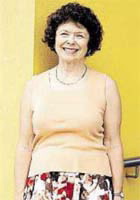 |
| At the wheel... Anne Williamson has helped highlight the dangers of fatigue on our roads |
"Click, clack, front and back" and "Don't drink and drive" are slogans well ingrained in Australians' psyches. These campaigns have educated the nation's drivers and helped lower the number of people caught without seatbelts or drink driving.
But despite the government's Stop, Revive, Survive campaign, many people think nothing of getting behind the wheel tired. The reaction time of a driver who has been awake for 17 hours was equivalent to a driver with a blood alcohol of .05, says Anne Williamson, a transport and road safety researcher at the
University of NSW.
The academic's fatigue research has not only helped educate the public onthe devastating effects of dozy drivers but also forced police agencies to bolster their campaigns to curb fatigued drivers, now the second leading cause of accidents in Australia.
And despite popular belief, a lack of sleep is not the only factor that contributes to fatigue, she says. "People automatically think it's all about sleep, but [fatigue-related accidents] can happen even if you've have enough sleep."
Most of us have experienced the sleepy feeling that accompanies a drive on a seemingly endless stretch of road with a featureless background.
"Paying attention becomes more difficult when there's nothing going on," Williamson says. And fatigue can set in on any journey, not just long hauls.
"A lot of fatigue happens on the commute home from work," she says.
David Vaux
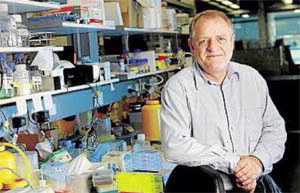 |
| Gene pool... David Vaux helped reveal the mysterious workings of cancer cells |
One in two Australian men and one in three women will develop cancer before their 85th birthday. Research by David Vaux, whose discoveries in the 1980s led to a seismic shift in scientists' understanding of cancer growth, has now paved the way for clinical trials of new drugs which may eventually transform the way we treat cancer.
Broadly speaking, tumours result from the uncontrolled division of abnormal cells in any organ of the body.
Vaux showed cancers developed not only because too many cells were produced, but also when cells failed to die. "In our bodies, a million cells divide in two every second, [which means] you've got to get rid of a million of cells every second," says Vaux, the assistant director of the Walter and Eliza Hall Institute.
"If this doesn't happen, tumours can form," he says.
While cell growth and death is tightly controlled by our genes, mutations of one gene involved in this system, coupled with the overexpression of another, can cause an imbalance between cell growth and death.
In 1988, Vaux discovered that a specific gene, called Bc12, prevented cells from dying. This pro-survival gene, which allows some cancer cells to become long-lived, revealed the first molecular insights of how cells "suicide" and launched an era of cell death research.
"Cell suicide was first recognised in the 1840s but hardly anybody studied it because nobody knew how the mechanism worked," Vaux says.
His findings led to the development of two classes of anti-cancer drugs, now in clinical trials, which target pro-survival proteins to cause cancer cells to die.
Ruth Hall
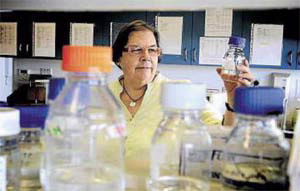 |
| Resistance fighter Ruth Hall... she lifted the lid on how superbugs develop |
No doctor needs to tell Ruth Hall to finish a course of antibiotics. The world-leading molecular biologist knows, perhaps better than anyone, the tricks bacteria use to resist the only drugs known to tame them.
"Until you've taken the full course, the [bacteria] can come back and with more resistant ones among them," she says. Hall's work on bacteria led to the discovery of an important genetic system that allows the micro-organisms to develop multiple defences to antibiotics.
This system is now routinely used by epidemiologists to track superbugs. Several decades before Hall started her work, scientists knew of one tactic bacteria used to develop resistance - they could pass resistance genes to each other via small molecules of DNA known as plasmids.
By the time Hall came along, most countries had stopped working on antibiotic resistance, believing plasmids were "the end of the story", she says. Some public health officials even believed bacterial diseases had been conquered because pharmaceutical companies could continue producing antibiotics.
"But the reasoned view coming from those closer to the story was 'oh help, this is wrong.
It's not like that at all,' " Hall says.
\It was while working at the CSIRO in the 1980s, when early genome sequencing techniques were developing, that Hall began examining the genetic blueprint of bacteria.
Australian scientists spent a total of more than 500 years preparing applications for research funding in 2012.
Only one in five were successfully funded.
With her colleague, Dick Obbink, from the Royal North Shore Hospital, Hall noticed common regions of DNA surrounding the resistance genes of several unrelated species of bacteria.
Hall teamed with Hatch Stokes from Macquarie University and discovered these mobile genetic segments - later called integrons - had the ability to collect and swap genes, notably those encoding antibiotic resistance.
Further research demonstrated integrons could capture multiple genetic resistance genes - allowing them to block the effects of multiple antibiotics.
This story is courtesy of The Age newspaper
Published: 08/04/2013


